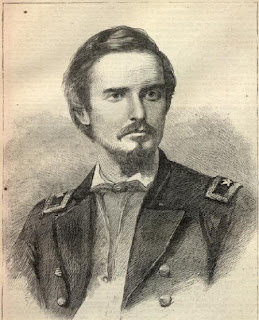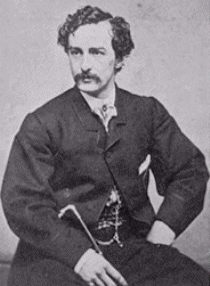>
I seem to have started a fad several months ago when I downloaded the Ghost Radar app on my BlackBerry and began tweeting about it. A lot of my friends began playing with it too, and subsequently, a lot of questions about its use have come to me. There are several versions of the app, including free versions and paid versions, all for Droid, BlackBerry and iPhone. I’m not sure if the app is available on other smartphones but you may certainly find out by looking through your own apps. I have used the free version for BlackBerry, the paid version for BlackBerry, and the paid version for iPhone. Of those, I have judged the paid version for iPhone to be the best. I would bypass all free versions of this app, however, because it’s rather limited, it doesn’t keep records of your sessions, and there is very little control over how the sessions are operated. Pay the $0.99 on iPhone or $2.99 on BlackBerry. It’s worth the price and does nothing to harm your phone.
I have been using the app for several months and in general I find it to be very satisfactory. It does, however, take some practice in learning to use it properly.
Here is the description of Ghost Radar from the product website:
Ghost Radar is a portable application designed to detect paranormal activity. Currently supported portable devices include the iPhone, iPod touch, iPad, BlackBerry and Android devices. Ghost Radar attempts to detect paranormal activity by using various sensors on the device on which it is running. Like traditional paranormal detecting equipment Ghost Radar employs sensors that measure electromagnetic fields, vibrations, and sounds. However, traditional paranormal equipment can be easily fooled when simple mundane bursts of normal electromagnetic fields, vibrations and sounds occur. Ghost Radar sets itself apart by analyzing the readings from sensors giving indications only when interesting patterns in the readings have been made.
Ghost Radar employs a proprietary algorithm to analyze the quantum flux. This application does NOT detect EMF nor gravity. Readings for various sensors are analyzed to detect QUANTUM Fluctuations. Interpretations of the sensor readings are displayed graphically as blips on the radar along with numeric and textual readouts on the VOX. Use your Ghost Radar to hunt for odd changes in the flux. Hunters of all types may find anomalous areas of their environment where readings simply can’t be explained. You be the judge. Are the results of your hunting evidence of paranormal activity?
The theory of what is happening is that intelligent energy can be made aware of their ability to influence the sensors of the mobile device. The various readouts are an interpretation of certain readings from the sensors. An intelligent energy should be able to influence the readouts and communicate with you. What those readings mean and how you interpret them is up for debate.
I began using this app as a joke. My friend downloaded it, so I thought it would be funny. The more I used it and the more my friends used it, the more we realized this might not be so much of a joke after all. Many of us began receiving words and activity in direct response to questions done in the style of classic EVP sessions. One of the first instances that alerted me to the possibility that something genuine might be happening was when my friend received the word “potatoes” while she was driving. She brushed it off as nothing until she reached her destination a few minutes later and found her grandmother peeling potatoes in the kitchen. Several other similar instances followed from other friends of mine.

In my case, I decided I should try to ask questions of my regular entities that would be harder to chalk up to coincidence. I asked if Joshua Lawrence Chamberlain was present and the readings started jumping around and going crazy. I then asked what my brother was doing (we live in different states) and words describing him being in an office and rolling in a chair started appearing on the screen, as did the word Tom, which was what my brother’s name was when Lawrence knew him. I asked my brother what he was doing at that time and all of the words on my radar log matched with his activities. If I didn’t know what my brother was doing, then an inanimate object like a cell phone could not be influenced by any prior knowledge either. Other key words that I have told Lawrence to use with mediums also came up on the screen during that session, which lasted about twenty minutes. The words are specifically uncommon and unique to us in order to prevent false leads through coincidence.
Then all activity ceased for several hours. That in itself is telling for me in that if the app was entirely fake, the activity would not correspond with questioning or other forms of activity like noises, shadows, and so forth. I have left the app running for entire 24 hour periods to see how it does and it will be completely dead (excuse the term) for hours and hours at a time. But when I begin seeking an entity, the activity picks up again in most cases.

Not long after I began using the app, my friend and I went to the Kennesaw Battlefield to see what kind of results we would get amongst hundreds of Civil War soldiers. Most of the words received that day were military in nature. There were also a lot of words we didn’t understand having to do with a farm, but much later we realized there was a farm heavily involved in the battle. My friend also kept the radar away from me so that I could see if my senses as a medium corresponded with the blips of concentrated energy on the radar screen. Much to our surprise, things matched up in every instance.
We also acquired the spirit of Dan McCook from Ohio, who named himself on the screen. As we were walking along, many words came but we didn’t make sense of them until we came to a plaque discussing the work of McCook in Kennesaw. It all made sense then. He followed us to dinner that night and lingered around for a few days before leaving, although he seems to visit my friend at times. He described his family as a tribe and offered names of specific family members, which I knew nothing about until I researched his life later. Almost every word received during the encounter with McCook was matched later with information gathered in research. The likelihood of coincidence became less and less with every matched word.
Also during our exploration of Kennesaw, I drove my wheelchair too fast and got stuck on large rocks. My friend came to my rescue and words like “careful” appeared on the screen as if the spirits there were concerned about my accident.
The entity who utilizes the Ghost Radar the most in my case is John Wilkes Booth, as I have discussed in another blog. I got several names, including John, and at first the names made no sense to me until a couple of days later when I started doing some reading about him for the project I’m writing for him. I found out that the names being listed on the radar were all of John Wilkes Booth’s siblings. One of the results during that session was actually the phrase “locate Asia” and even though I’m not sure what he meant by that but asking for name and getting Asia was beyond coincidental in my opinion. Asia was his sister and they were very close.
I also noticed that every time my friend came over for a visit, within five minutes of her coming into my house, it would say words like “plain” and various other words that described a person’s opinion of her looks and her personality. We both kind of laugh about this because it happens every time she’s here. She has rather short hair like a pixie cut and she never wears dresses and she would be considered rather plain by Victorian standards, so we both have this hunch that it’s John Wilkes Booth expressing his opinions about her since he was so used to beautiful, feminine, compliant and swooning women in his lifetime. Joshua Lawrence Chamberlain nor my other entities would be so audacious as to express opinions of that nature about someone I love so much like my friend. That kind of audacity has to come from someone with an audacious personality. John Wilkes Booth. These are not just assumptions though because there are times when the word John comes up on the screen when I’m looking for identification.
How does the Ghost Radar work? I don’t really know. I don’t really know how other paranormal equipment works either. I do, however, have a few tips for people.
1. Pay attention to the concentrated energy blips on the radar screen. They indicate where there might possibly be an entity present. From the product website: “On the Radar view the colors of the blips are an indication of signal strength. Red indicates the signal is strongest. Yellow is a little weaker signal than red. Green is a little weaker signal than yellow. Finally blue indicates a very weak signal.”
2. Don’t pay attention to the words in the first ten minutes of turning on the app. If you notice, every time you turn it on, it seems like all the measurements are going crazy and a lot of words are coming out as well. It’s not because you have a spirit jumping up and down trying to talk to you. It’s because all the energy disruptions in that environment are registering at the same time because it’s not acclimated to reading your environment yet. Give it time to even out before you start looking at it as possible evidence.
3. If the words don’t make sense right away, they might later. For example, I kept getting the word “fire” when I was at home and I never understood it. Later, I went to an antique store and found rather long photographs of fire damage. My area of Atlanta had burned down in a great fire of 1917 that destroyed 300 acres and displaced thousands of people. I was not aware of this fire and had I not found those photographs, the repeated word of fire would never have made sense to me. Typically when words don’t make sense, it is due to one of three reasons: a) the words come from spirits you don’t know and it’s like trying to understand a conversation walking halfway into it, b) the words are random with no meaning and are the result of interpretations of natural fluctuations of energy, or c) spirits having difficulty manipulating the energy to pull the correct word from the dictionary.
That is the biggest issue people have – what to do with words that don’t make sense. I have found that it is a matter of patience and a process of elimination. It’s important to get to know the history of your locality and learn about the people who lived in your vicinity before you. I get a lot of words from spirits I don’t know at all because they are simply local to my area. If the words don’t match up with anything known to my area or my regular spirits, I typically try to find out if it’s a spirit passing through my area. Being a medium, I get a lot of unseen passersby. It takes a lot of patience and repetitive questioning to discover the patterns and how to identify this or that spirit. It is also very important to remember that this is not an exact science. This is not a device designed for measuring spirit energy. This is a cell phone using its existing structure to measure possible spirit energy. Therefore, there are going to be nonsensical words and misinterpreted readings of natural energy fluctuations. My advice is to really get to know the history of your locality in order to better understand the words you are receiving.
Read More




















